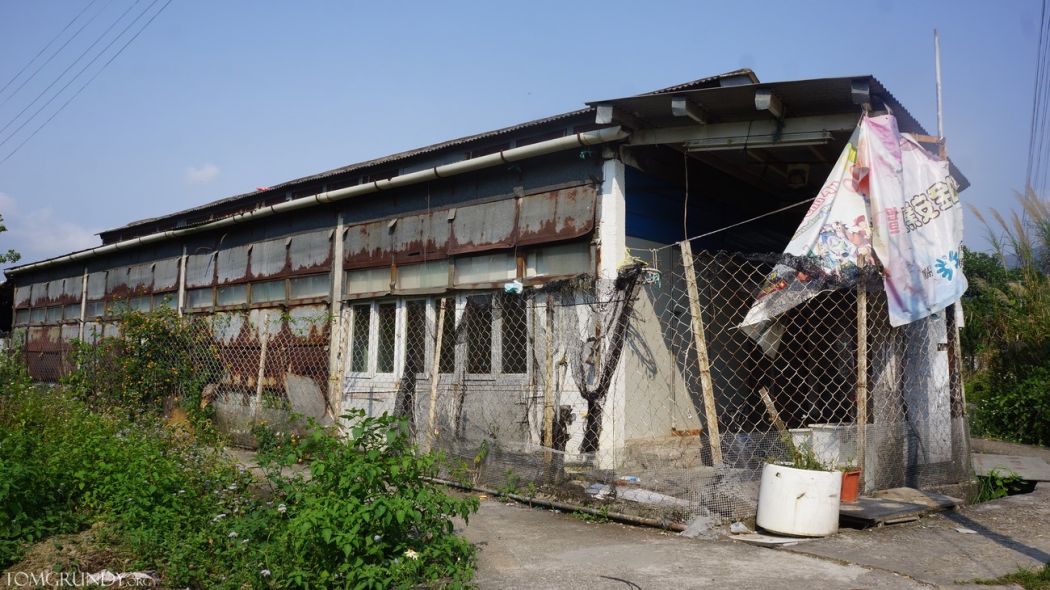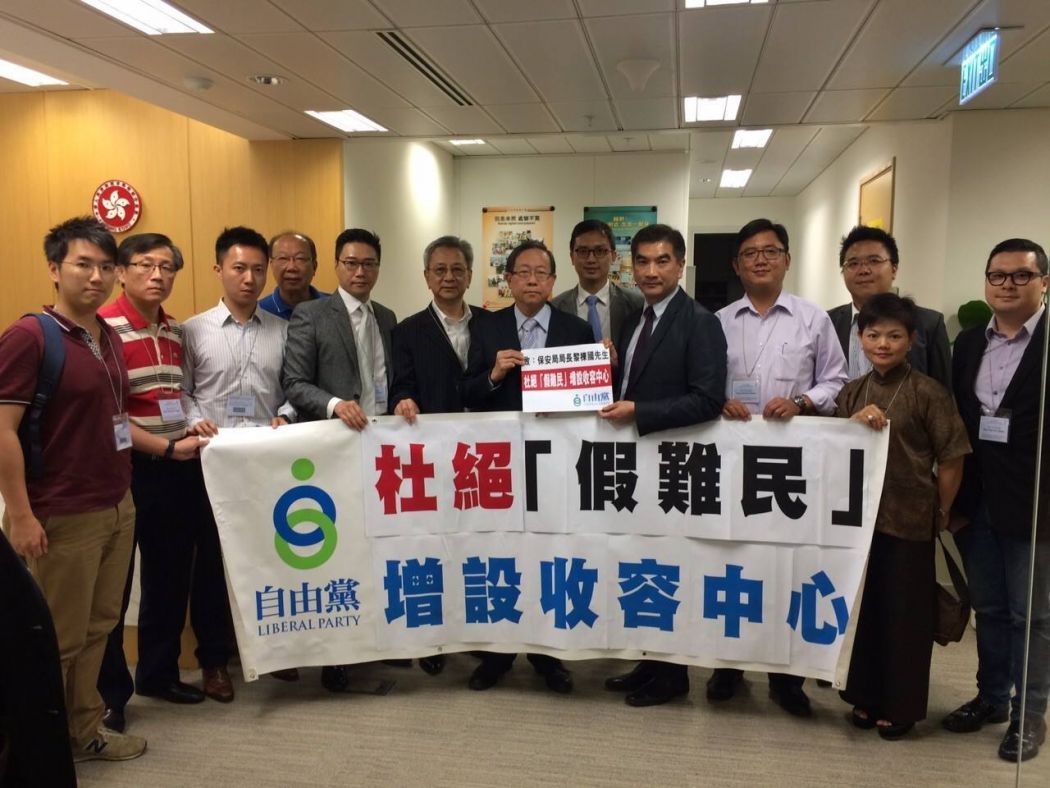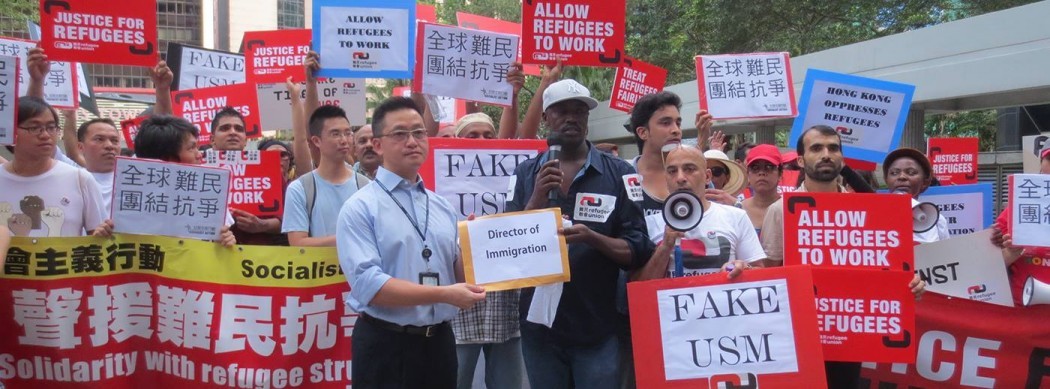The global discussion of refugees is constantly swaying from one extreme end of the spectrum to the other. For years, refugees had to defend themselves against insults and harsh criticisms from those who did not welcome them. When Brandon Stanton, the photographer behind the hugely popular “Humans of New York” Facebook page, began telling the stories of refugees, something surprising happened. A human face was put onto the tragedies that we only vaguely hear about on international news, and each story was heartbreaking and unique. Encouraging words and prayers were left under the posts, and different people offered their assistance to these strangers.
In September 2015, when a drowned Syrian child was found washed up on a beach in Turkey, it opened the world’s eyes to the tragic plight of refugees. Leaders of countries pledged to do more. Refugees were greeted warmly as they arrived in Europe and Canada.

The positive tone was short-lived. The scales tipped when a series of sexual assaults against women were committed on New Years’ Eve in Cologne, Germany, by what was rumoured to be refugees and asylum seekers. Later, it was reported that the first man to be arrested in relation to the attacks was a 26-year-old Algerian asylum seeker. This quickly prompted a wave of backlash against them. Migrant men were briefly banned from a swimming pool in Germany. Charlie Hebdo published a cartoon depicting a scene in which the aforementioned dead Syrian child grew up to be a sex offender.
In Hong Kong, however, the news coverage on the matter is a lot less volatile; while the global media wavered indecisively between sounding sympathetic or unforgiving, here the tone is almost consistently negative. On January 13, Chief Executive Leung Chun-ying said at a press conference following the delivery of his policy address that if necessary, the government may withdraw from the United Nations Convention against Torture (UNCAT). This was to address the problem of “fake refugees” in the city who were abusing the system, Leung said.

“We stress that we do not want any country to abuse Hong Kong’s relatively open immigration policy, and [we] do not want anyone to abuse the visa-free arrangement between us and their country… we must fix this loophole,” Leung said. Leung then singled out Oriental Daily and praised it for the coverage the paper devoted to the matter.
As Victoria Wisniewski Otero, Advocacy and Campaigns Manager at Justice Centre Hong Kong, told HKFP in August 2015, “Many refugee and human rights groups have noticed a turn for the worse in the government’s discourse and press statements in relation to refugees.”
All this makes telling the stories of refugees in Hong Kong all the more difficult. Unlike those featured in Stanton’s stories, refugees in Hong Kong remain nameless and faceless, cut off from society, reduced to statistics.
A Sri Lankan refugee’s story
In his small room in Yau Ma Tei, Paul (name changed for legal reasons), a 41-year-old refugee from Sri Lanka, paces back and forth restlessly. He spends most of his day thinking about his family and worrying about their safety; they are currently in hiding in Sri Lanka.
Although he no longer fears for his own life, the future still holds many uncertainties. Out of the 42 successful non-refoulement claims that came out of Hong Kong since 2009, Sri Lankan claimants have been the most successful out of all the nationalities; however, that number still stands at a mere 14. Paul does not feel welcome in the city; when he first got here, an immigration officer asked why he chose Hong Kong as his destination, as opposed to other countries such as Syria, despite the fact that, by then, a Civil War had broken out in that country.
Before the events that would eventually end with him running away to Hong Kong, Paul had been a successful gymnastics teacher living in Sri Lanka with his wife and three children. He had a comfortable, stable job teaching at Lyceum International School in the Gampaha district.
This changed in 2009 when Paul was unexpectedly and reluctantly dragged into politics. He was forced by Mohan Lal Grero, the managing director of the school he was coaching in, to campaign for Sarath Fonseka, a candidate from the New Democratic Front political party in the upcoming elections. Lal Grero wanted the party, which was in opposition to the ruling government, to secure a seat in parliament. He told Paul that if he did not assist him, he would be fired from the school.
“He specifically addressed me as I was a gymnastics coach for five other schools and I had over 500 students under my training… he was aware that I had lots of access to the parents of these students,” Paul told the Hong Kong immigration officer.
Paul, who could not afford to lose his job, took part in the political campaign, attending meetings, putting up posters, organising rallies, and lobbying for votes among his students’ parents. Paul was also assigned as the leader of nine other staff members who were similarly told to support the opposition party.
Campaigning for the opposition, however, made Paul an enemy of the ruling party. The government had been headed by President Mahinda Rajapaksa, who have been accused of committing war crimes with the help of his brother, defence secretary Gotabaya Rajapaksa.

In November 2009, with the elections just two months away, Paul and the other staff were engaged in campaign activities when members of the ruling government party, the United People’s Freedom Alliance (UPFA), showed up with Type 56 rifles. They assaulted one of the staff members and threatened the others to leave.
Mervyn Silva, the leader of the ruling party in Paul’s region, then won the seat in the parliament during the election in January 2010. Under his command, five other threats and attempts on Paul’s life were made following the first incident. In one of them, a bullet fired from a black Defender narrowly missed Paul, who had swerved his motorcycle out of the way just in time; Paul consequently fell off the road and crashed.
In November 2010, two men showed up at Paul’s door at 10pm one night and fired two shots at the house, in front of his wife and children.
“They came out of the room and started shouting and crying,” Paul recalled. “I didn’t know what I was going to do next; my mind went blank.” Paul has difficulty speaking about the events; it brings back memories he does not want to revisit.
Mervyn Silva was a man with a history of violence. In 2010, he tied a government official to a mango tree. In 2012, Mervyn Silva would make international news as the cabinet minister who threatened to “break the limbs” of journalists and human rights activists opposed to the government. He also launched an official campaign to denounce what he called “traitors”.
Mervyn Silva refused to listen to Paul’s explanation that he was coerced into the campaign. The police, who were in support of the ruling party, also accused Paul of lying and did not file his complaint.
“I thought very seriously [about it] – me being there is a danger to my family,” Paul said. He fled Sri Lanka in December 2010 and first went to China, as it was relatively easy for him to get a visa there. He stayed there for six months, then fled to Hong Kong and arrived in June 2011.
Paul applied for protection under the Convention Against Torture upon arrival in Hong Kong. In December 2011, a Senior Immigration Officer asked Paul why he chose Hong Kong as his destination, and not other countries he had previously travelled to in the capacity of a coach, such as Syria. This was despite the fact that in March 2011, the Syrian Civil War had broken out, producing millions of refugees itself.
“Had he taken the Immigration Officer’s suggestion, he would most certainly be dead today. That same officer asked the client why he did not seek asylum in mainland China, despite the fact my client was threatened with extra-judicial killing by security forces backed by the mainland Chinese military and government, these security forces pointing Chinese manufactured and supplied assault rifles at my client,” said Robert Tibbo, the barrister who is representing Paul in his judicial review and non-refoulement claim under the government’s refugee Unified Screening Mechanism.
Following the 2015 elections the UPFA is no longer the ruling party, but Mervyn Silva continues to be a threat to Paul and his family’s safety. He has switched his allegiance and turned against the former president, reporting the president’s family to the country’s criminal investigation department. It is also difficult for Paul to relocate to another location in Sri Lanka; he would have to register with the new head of the village, making him easy to track down.
When asked what he spends most of his time doing in Hong Kong, his answer was simple: “Nothing.” This was not out of choice; Paul could not work here, and as a result, he has not sent a single cent back to his family in years, he said guiltily.

Like other refugees, Paul faces a future with many uncertainties. Justice Centre’s Otero said, “Even if a decision is made and their claims are meritorious, the journey is far from over. The system does not provide a durable resolution for them. That’s what’s so devastating… they’re put on hold indefinitely.”
The faceless and the nameless
Paul is just one of the many faceless and nameless outliers of the city, stuck in a broken system and pitied by few. Otero said that refugees have no opportunity for integration in Hong Kong; they cannot work and cannot contribute to society, and barely have enough money to allow them to live a normal life. They cannot afford to see a movie or take the transport to go to the park, and as a result they are cut off from most Hong Kong people. Unlike citizens in places like Canada, Hongkongers can rarely meet refugees, recognise their talents or see what they have to offer.

The public tends to believe what they read in the media, Otero said, and the coverage has been mostly negative. Local people are not exposed to refugees in a micro-environment, and as a result these negative stereotypes are not dispelled. One common allegation is that the refugees are “fake”. In an opinion piece earlier this week, Michael Leung stated that organisations such as The Alliance Demanding Repatriation of Refugees have long been putting up a fight against refugees, arguing that “fake” refugees from Southeast Asia rush into Hong Kong in order to take black labour jobs and waste taxpayers’ money by applying for living subsidies and legal aid. When Sing Tao Daily revealed in October that Indian companies were arranging for fake refugees to come to Hong Kong, proponents of this argument rejoiced.
Tibbo argued that these accusations are based on a few cases and these claimants come from a single country, meaning that they represent a small fraction of the total number of asylum seekers in Hong Kong. “These asylum seekers have not yet had their claims decided under the USM, so it is premature to accuse any one of them of being fake. Those tortured or persecuted in their home countries are entitled to enter into Hong Kong to seek asylum even if they enter illegally or commit a related offence,” he said.

It is also unclear what the government means by “fake”. HKFP has asked the Immigration Department for clarification, and the question has been referred to the Security Bureau, but there has yet to be a reply. Michael Leung argued that Hong Kong’s low refugee recognition rate of 0.5 percent is not reflective of unworthy or “fake” refugees; rather, it was a result of the Immigration Department’s refusal to acknowledge risks in the refugees’ country of origins, even when the rejected claimants are from countries flagged by the United Nations High Commissioner for Refugees as countries of concern due to widespread conflicts and persecutions.
Tibbo also said that such a view was not rational and actually indicated the problems with the current refugee screening system – the Unified Screening Mechanism (USM). According to Tibbo, the UNCAT Committee has pointed out that Hong Kong has only considered 32 out of 6628 non-refoulement claims substantiated, reflecting the existence of a distinctly high threshold.
“That damaging finding exposes the basis for the Hong Kong government accepting so few asylum seekers through the USM and nothing to do with alleged fake refugees. In that context one could describe the current refugee screening system as being a ‘Fake USM’.”

Another common argument shaping the refugee discourse is an economic one. In August, when HKFP did a piece on refugees, readers accused them of being ‘economic migrants’ – despite the fact that refugees are not legally allowed to work in Hong Kong and many live in slums. The subsidies that the government gives refugees – HK$1,200 for food and HK$1,500 for housing – are barely enough for them to get by. “At present the government has failed to provide for the basic needs of asylum seekers in Hong Kong,” Tibbo said.
Some also argue that refugees would take local people’s jobs, but the city boasts a low unemployment rate of 3.3 percent. In fact, Michael Leung suggested that refugees could in fact help ease the problem of labour shortage in Hong Kong.

Tibbo also said that there is no case to be made that Hong Kong has insufficient resources to support the refugees. “The Hong Kong government has enormous financial, physical and human resources to fully support the small number of asylum seekers in Hong Kong. Globally, being one the wealthiest jurisdictions, it is a fallacy that the Hong Kong government has insufficient resources to properly sustain refugees in Hong Kong.” As of April 2015, Hong Kong’s fiscal reserve stand at $828.5 billion.
“For that matter, the Hong Kong government has substantial resources to alleviate poverty in Hong Kong in general, but instead uses fear of possible economic collapse to hold the money in its coffers, money that should be used for social and related grass roots programs, for a large proportion of the Hong Kong population that live at or below the poverty line.” Tibbo’s comments are especially interesting considering the amount of money Hong Kong has spent on white elephant projects. Recent reports have also stated that the HongKong-Zhuhai-Macau bridge (HZMB) and the High Speed Rail link (HSR) projects are asking for an additional HK$5.46 billion and HK$19.6 billion respectively due to overexpenditure.
Hong Kong’s history has long been shaped by the arrival of refugees; much of today’s Hong Kong population are actually direct descendants of refugees who settled in the city over the past 80 years, displaced by a series of historical events, from the Chinese Civil War in the 1930s to the Cultural Revolution. It is a city whose fortunes have been built on the back of refugees fleeing persecution. Justice Centre noted that if Leung were to withdraw Hong Kong from the UNCAT – a Convention 158 countries out of 193 UN member states were party to – it would join the ranks of repressive regimes such as Zimbabwe, Central African Republic and North Korea. Although human rights groups and academics have clarified that this does not release Hong Kong from its international obligations, the government’s continuous efforts to eliminate them from the city mean one thing is clear: an even bleaker and more uncertain future would await Paul and many others like him.
Refugee Facts & Figures
Q: How many refugees are there in Hong Kong?
A: According to figures released by the Immigration Department, as of December 2015 there are currently 10,922 refugees with outstanding non-refoulement claims in Hong Kong. 21.2 percent are Vietnamese, 19.1 percent are Indian, 17.7 percent are Pakistani, 12.3 percent are Bangladeshi, and 10.2 percent are Indonesian.
Q: On what grounds can refugees apply for non-refoulement in Hong Kong?
A: One could make a claim under the United Nations Convention Against Torture, the 1951 Refugee Convention, or claim Cruel, Inhuman or Degrading Treatment or Punishment (CIDTP). They are currently screened by the government under the Unified Screening Mechanism.
Q: What is the life of a refugee in Hong Kong like?
A: Refugees are not allowed to work and survive on food and housing allowances. For an adult, the monthly housing allowance is around HK$1,500 per adult, paid directly from the International Social Service to the landlord. They receive supermarket vouchers of HK$1,200 for food every month.
Q: What happens to refugees after their claims are processed?
A: If they are successful with their claim under the 1951 Refugee Convention, they are referred to the UNHCR office in Hong Kong, after which they could be resettled in another country. However, the length of the wait could vary depending on the quota of the intake country. Nothing changes if they are successful in their torture claims or their claims under CIDTP; they still have no legal status and are not allowed to work. If they are unsuccessful in their claims, they can seek judicial review, which could relaunch the screening process. If they exhaust all their legal remedies, they could be deported back to their home country.
Q: How likely is a refugee to succeed in his/her non-refoulement claim?
A: Since the implementation of the Unified Screening Mechanism in Hong Kong in March 2014, only 18 claims have been successful, according to Justice Centre Hong Kong. Between 2009 and December 2015, 42 claims out of 7,920 in total have been found to be ‘substantiated’ by the government.
